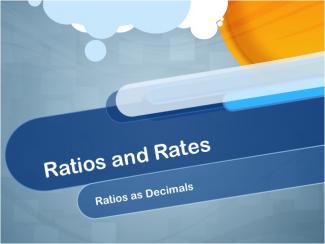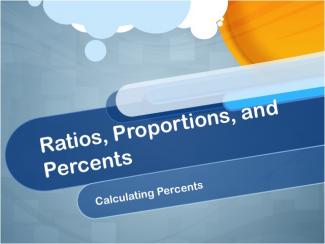Content Showcase: Video Library
|
Media4Math's Video Library is a collection of videos on key topics in pre-algebra and algebra. Each video includes several worked-out examples that clearly explain the key concept. All videos include real-world applications of math.This is a growing collection of resources, so keep coming back!(Want to learn more about our subscription packages? Click here.)
|
Video Library
| Title | Thumbnail Image | Description |
|---|---|---|
Closed Captioned Video: The Distributive Property: a(-x - b), a negative, b negative |

|
Closed Captioned Video: The Distributive Property: a(-x - b), a negative, b negativeVideo Tutorial: The Distributive Property: a(-x - b), a negative, b negative. In this video use the distributive property with an expression of the form a(-x - b), a negative, b negative. |
Closed Captioned Video: The Distributive Property: a(-x - b), a negative, b positive |

|
Closed Captioned Video: The Distributive Property: a(-x - b), a negative, b positiveVideo Tutorial: The Distributive Property: a(-x - b), a negative, b positive. In this video, we will use the distributive property with an expression of the form a(-x - b), a negative, b positive. |
Closed Captioned Video: The Distributive Property: a(-x - b), all constants positive |

|
Closed Captioned Video: The Distributive Property: a(-x - b), all constants positiveVideo Tutorial: The Distributive Property: a(-x - b), all constants positive. In this video use the distributive property with an expression of the form a(-x - b), all constants positive. |
Closed Captioned Video: The Distributive Property: a(x - b), a negative, b negative |

|
Closed Captioned Video: The Distributive Property: a(x - b), a negative, b negativeVideo Tutorial: The Distributive Property: a(x - b), a negative, b negative. In this video, we will use the distributive property with an expression of the form a(x - b), a negative, b negative. |
Closed Captioned Video: The Distributive Property: a(x - b), a negative, b positive |

|
Closed Captioned Video: The Distributive Property: a(x - b), a negative, b positiveVideo Tutorial: The Distributive Property: a(x - b), a negative, b positive. In this video use the distributive property with an expression of the form a(x - b), a negative, b positive. |
Closed Captioned Video: The Distributive Property: a(x - b), all constants positive |

|
Closed Captioned Video: The Distributive Property: a(x - b), all constants positiveVideo Tutorial: The Distributive Property: a(x - b), all constants positive. In this video, we will use the distributive property with an expression of the form a(x - b), all constants positive. |
Closed Captioned Video: The Distributive Property: a(-x + b), a negative, b negative |

|
Closed Captioned Video: The Distributive Property: a(-x + b), a negative, b negativeVideo Tutorial: The Distributive Property: a(-x + b), a negative, b negative. In this video use the distributive property with an expression of the form a(-x + b), a negative, b negative. |
Closed Captioned Video: The Distributive Property: a(-x + b), a negative, b positive |

|
Closed Captioned Video: The Distributive Property: a(-x + b), a negative, b positiveVideo Tutorial: The Distributive Property: a(-x + b), a negative, b positive. In this video use the distributive property with an expression of the form a(-x + b), a negative, b positive. |
Closed Captioned Video: The Distributive Property: a(-x + b), all constants positive |

|
Closed Captioned Video: The Distributive Property: a(-x + b), all constants positiveVideo Tutorial: The Distributive Property: a(-x + b), all constants positive. In this video use the distributive property with an expression of the form a(-x + b), all constants positive. |
Closed Captioned Video: The Distributive Property: a(x + b), a negative, b negative |

|
Closed Captioned Video: The Distributive Property: a(x + b), a negative, b negativeVideo Tutorial: The Distributive Property: a(x + b), a negative, b negative. In this video use the distributive property with an expression of the form a(x + b), a negative, b negative. |
Closed Captioned Video: The Distributive Property: a(x + b), a negative, b positive |

|
Closed Captioned Video: The Distributive Property: a(x + b), a negative, b positiveVideo Tutorial: The Distributive Property: a(x + b), a negative, b positive. In this video, we will use the distributive property with an expression of the form a(x + b), a negative, b positive. |
Closed Captioned Video: The Distributive Property: a(x + b), all constants positive |

|
Closed Captioned Video: The Distributive Property: a(x + b), all constants positiveVideo Tutorial: The Distributive Property: a(x + b), all constants positive. In this video, we will use the distributive property with an expression of the form a(x + b), all constants positive. |
Closed Captioned Video: Geometry Applications--Antiprisms |

|
Closed Captioned Video: Geometry Applications--AntiprismsIn this video students learn the basics of antiprisms, in the context of New York’s Freedom Tower, which has an antiprism design. They learn the properties of antiprisms, with the focus on those with a square base. |
Closed Captioned Video: Geometry Applications--Rectangular Prisms |

|
Closed Captioned Video: Geometry Applications--Rectangular PrismsIn this video students learn the basics of rectangular prisms, in the context of a New York residential tower: 432 Park Avenue. |
Closed Captioned Video: Geometry Applications--Triangular Prisms |

|
Closed Captioned Video: Geometry Applications--Triangular PrismsIn this video students study a real-world application of triangular prisms: The Flat Iron Building in New York City. This building is an ideal example of a real-world prism and also provides a tie-in to right triangle geometry. |
Closed Captioned Video: Geometry Applications--Pyramid Volume |

|
Closed Captioned Video: Geometry Applications--Pyramid VolumeIn this video, students see a derivation of the formula for the volume of a pyramid. This involves a hands-on activity using unit cubes, along with analysis, and a detailed algebraic derivation. |
Closed Captioned Video: Measures of Central Tendency: Mean of a Probability Distribution |

|
Closed Captioned Video: Measures of Central Tendency: Mean of a Probability DistributionIn this video tutorial students learn about the mean of a probability distribution. Includes a brief discussion of expected value, plus a brief tie-in to weighted means. Includes three real-world examples. |
Closed Captioned Video: Geometry Applications--What Are Prisms? |

|
Closed Captioned Video: Geometry Applications--What Are Prisms?In this video students learn the basics of prisms and anti prisms. They learn the properties of triangular prisms, rectangular prisms, triangular antiprisms, and rectangular antiprisms. |
Closed Captioned Video: Ratios and Rates: Ratios as Decimals |

|
Closed Captioned Video: Ratios and Rates: Ratios as Decimals |
Closed Captioned Video: Ratios: Visual Models for Ratios and Percents |

|
Closed Captioned Video: Ratios: Visual Models for Ratios and Percents |
Closed Captioned Video: Ratios, Proportions, and Percents: Calculating Percents |

|
Closed Captioned Video: Ratios, Proportions, and Percents: Calculating Percents |
Closed Captioned Video: Ratios and Rates: Converting Measurement Units |

|
Closed Captioned Video: Ratios and Rates: Converting Measurement Units |
Closed Captioned Video: Ratios and Rates: Rates and Slopes of Lines |

|
Closed Captioned Video: Ratios and Rates: Rates and Slopes of Lines |
Closed Captioned Video: Ratios and Rates: Rates from Data |

|
Closed Captioned Video: Ratios and Rates: Rates from Data |
Closed Captioned Video: Ratios and Proportions: Scale Drawings |

|
Closed Captioned Video: Ratios and Proportions: Scale Drawings |